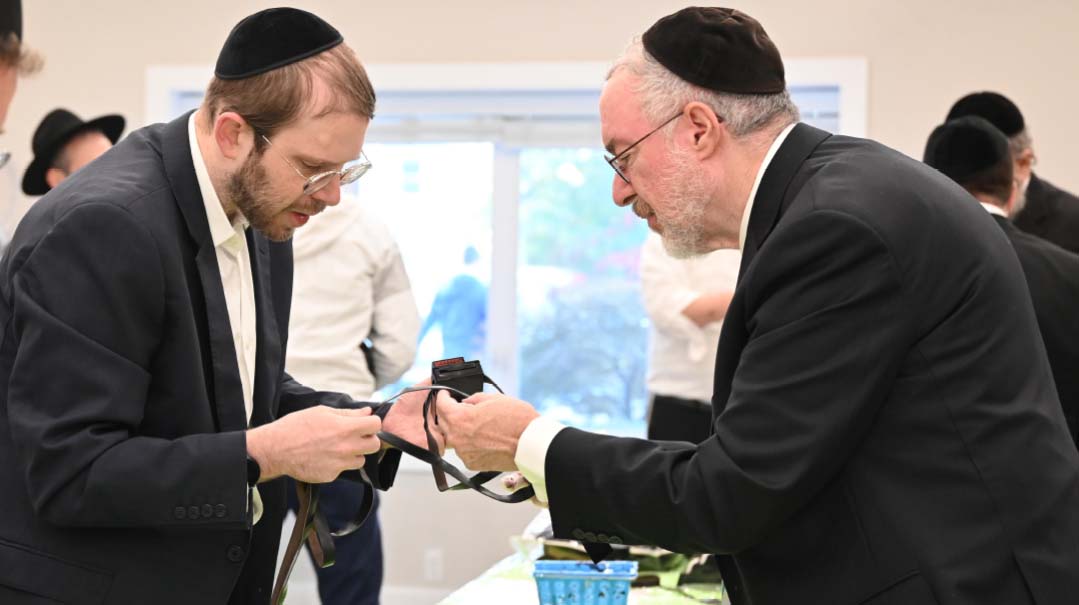Ties That Bind
| November 16, 2021You’ve been putting on tefillin for years, but what if someone told you your head placement is off, the knots aren’t made correctly, or the retzuos need a paint job?

Boxed In
After the last participants of the Avos U’Banim program in Lakewood’s Chestnut Shul finally turn out the lights and take their leave on this Motzaei Shabbos, Mr. Avrohom “Bumie” Schachter arrives to set up shop. Mr. Schachter is a soft-spoken Brooklyn businessman who, for the last fifteen years, has been running a voluntary side chesed business to ensure that the thousands of Jewish men who don tefillin daily are fulfilling the mitzvah properly.
Tomorrow morning, the rest of his team will show up, but tonight, Mr. Schachter, together with his son and grandson, are here to set things up: The elegant simchah room adjacent to the main beis medrash is transformed into a tefillin repair shop. First, the tables are set up and draped with eye-catching tablecloths, and then the “tefillin kavanah and measuring cards” designed by Mr. Schachter are placed at half-foot intervals, followed by albums documenting various uncommon “pesulim” he’s found over the years.
Finally, Mr. Schachter tacks up the signs that will greet the men as they arrive for Shacharis the next morning. Chestnut Shul caters predominantly to an English-speaking crowd, yet Mr. Schachter puts up his Yiddish poster as well. He wants to notify the chance Yiddish speaker that might daven there tomorrow, but admits he has an ulterior motive. “I want people to see that this is a program that reaches a cross section of Klal Yisrael,” he says.
The “Tefillin Awareness Project – Hanacha K’Halacha,” Mr. Schachter’s brainchild, involves a dedicated crew of qualified batim machers and sofrim who traverse the Tri-state area and beyond, coming to different shuls every week where they check the knots, straps, stitching and batim of people’s tefillin. If needed, they will then adjust, correct or even replace parts as necessary. The visits take place on Sunday mornings, capitalizing on the less-pressured atmosphere and the one day most men have off from work, so that people will be more willing to undergo a “tefillin check-up.”
After one last glance around, Mr. Schachter is satisfied that everything is in place for tomorrow morning, when he and his team will be ready at the shul for the conclusion of its earliest minyan.
Oops! We could not locate your form.






